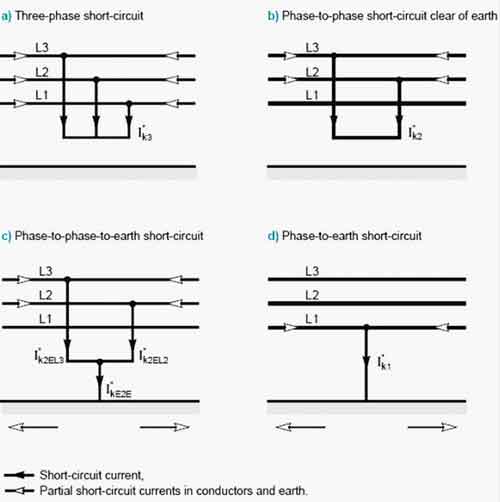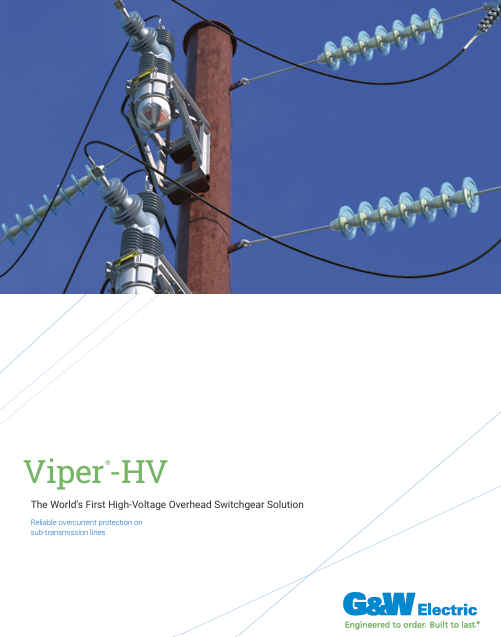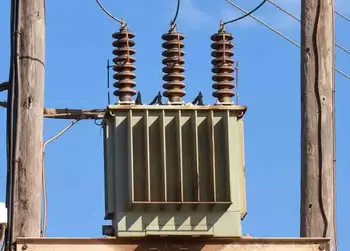Substation Explosion
By R.W. Hurst, Editor
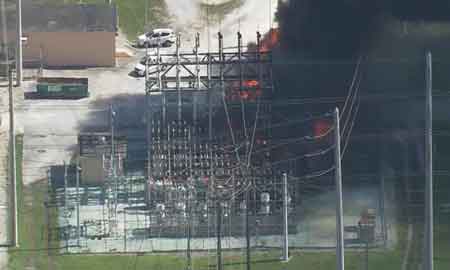
Substation Relay Protection Training
Our customized live online or in‑person group training can be delivered to your staff at your location.

- Live Online
- 12 hours Instructor-led
- Group Training Available
Download Our OSHA 4475 Fact Sheet – Being Aware of Arc Flash Hazards
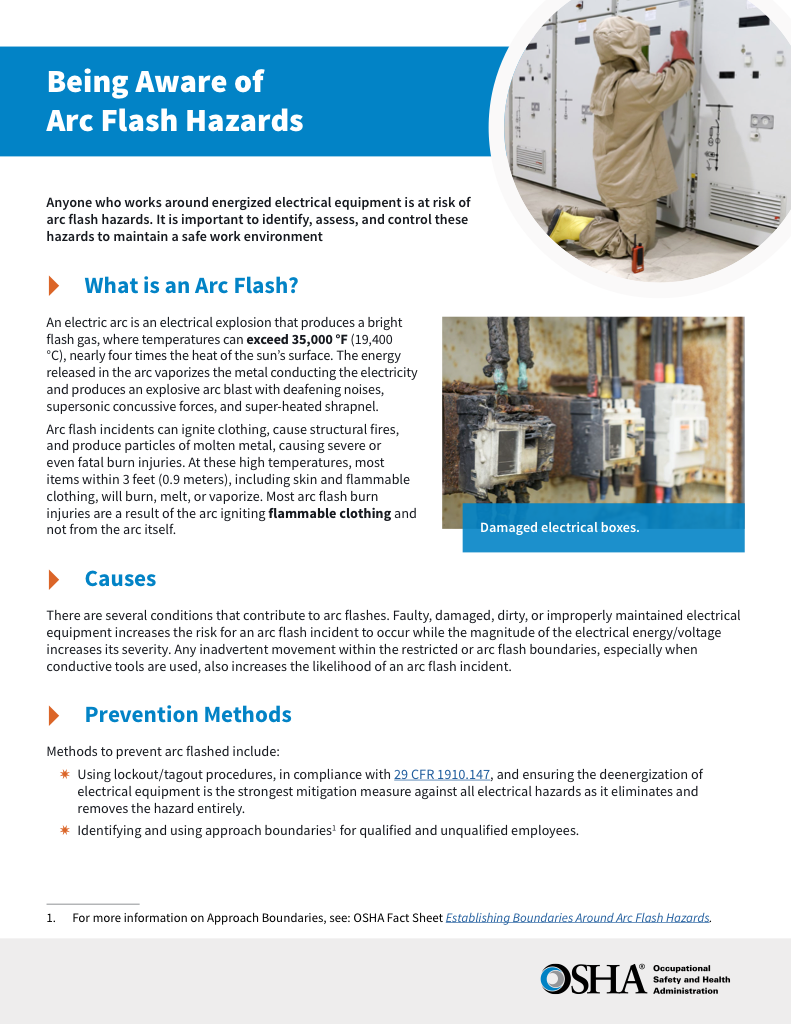
- Identify root causes of arc flash incidents and contributing conditions
- Apply prevention strategies including LOTO, PPE, and testing protocols
- Understand OSHA requirements for training and equipment maintenance
A substation explosion can trigger a major power outage, release plumes of smoke, and damage transformers. Learn what causes these incidents and how utilities can prevent them.
It is one of the electrical power grid's most dangerous and disruptive events. When an incident occurs at a power substation, it can produce plumes of smoke, result in a widespread power outage, and damage the utility infrastructure. Although these events are rare, the consequences are often severe. Understanding a substation explosion's root causes and impacts is critical for preventing future incidents and enhancing grid reliability.
Electrical Transformer Maintenance Training
Substation Maintenance Training
Request a Free Training Quotation
Causes of Substation Explosion
A substation explosion usually begins with a technical fault that escalates into a catastrophic failure. One of the most common causes is equipment failure in substation components, especially transformers. An aging transformer can overheat, and if its oil-based insulation ignites due to an internal arc or electrical fault incident, a violent transformer explosion can occur. Understanding the role of a substation transformer is essential when analyzing how internal failures can escalate into a full substation explosion.
Common causes include:
-
Transformer explosion due to overheating or arcing in oil-filled units
-
Insulation failure that leads to electrical arcing and combustion
-
Lightning strikes or storms that introduce surges and trigger faults
-
Tree contact or debris falling onto live equipment during weather events
-
Human interference, such as vandalism, theft, or sabotage
-
Neglected maintenance, allowing small faults to grow into major failures
Similarly, poor insulation on switchgear, loose connections, or deteriorated breakers can initiate arcing, rapidly escalating into fire or blast conditions. If an electrical substation transformer malfunctions, the result can be catastrophic due to the large volumes of insulating oil and high voltage.
Electricity Today T&D Magazine Subscribe for FREE

- Timely insights from industry experts
- Practical solutions T&D engineers
- Free access to every issue
Environmental conditions also play a significant role. Lightning strikes can inject massive overvoltages into the system, damaging components and triggering chain-reaction failures. High winds and fallen tree branches may cause short circuits or mechanical impacts, increasing the likelihood of a substation accident. In some cases, sabotage or vandalism has been documented as the root cause of damage, further complicating prevention efforts.
Consequences and Impacts
The fallout from a substation explosion can be immediate and far-reaching. The most noticeable consequence is a power outage, affecting entire communities or industrial zones. This disruption halts daily routines and paralyzes critical services such as hospitals, emergency communications, and transportation systems.
Major impacts include:
-
Power outage across critical sectors like hospitals, transit, and communication
-
Utility infrastructure damage requiring costly and time-consuming repairs
-
Service interruptions for thousands of customers and business operations
-
Plumes of smoke spreading across neighborhoods, triggering evacuations
-
Public safety risks, particularly to untrained responders or bystanders
In addition to service disruption, the explosion itself often causes extensive utility infrastructure damage. Electrical fires spread quickly among tightly packed equipment, often producing plumes of smoke that pose serious health risks to nearby populations. Many substation explosions begin with faulty electrical substation components that go undetected until it's too late. First responders face hazardous conditions, including live electrical systems, burning oil, and limited access. Cleanup and repairs can take days or weeks, depending on the destruction scope and replacement components' availability.
The economic impact is also considerable. Businesses experience downtime, repair costs strain utility budgets, and the public may lose confidence in grid reliability if incidents are frequent or mishandled.
Fire Suppression and Protection Measures
Preventing or containing a substation explosion requires proactive fire suppression strategies tailored to the unique risks of electrical environments. A modern fire suppression system may include inert gas technologies that can suppress flames without conducting electricity, making them safe around energized equipment. Water mist systems are another option, providing localized cooling and flame reduction without flooding the facility.
EF Partner Media
Physical layout is also a crucial factor. Proper electrical substation design helps isolate fault zones and minimize the spread of fire or blast damage. Fire-rated partitions and blast-resistant enclosures can compartmentalize damage, limiting the spread of fire or explosions to nearby components. Proper ventilation and oil containment systems further reduce ignition risk. All of these systems must be regularly inspected and maintained to be effective. Deferred maintenance is one of the leading contributors to substation accident escalation.
Developing a structured maintenance plan is essential, and the methodology for electrical substation maintenance programs offers a proven framework for reducing the risk of failure-related incidents.
Safety Protocols and Emergency Response
Rapid and coordinated emergency response is essential in the event of a substation explosion. Utilities must establish clear emergency action plans that include procedures for shutting down equipment, isolating affected areas, and notifying first responders. Substation personnel should receive regular safety training to ensure they recognize early warning signs and know how to evacuate safely.
Best practices include:
-
Comprehensive emergency plans outlining shutdown and communication steps
-
Personnel training on hazard recognition and evacuation procedures
-
Clear signage and access routes for first responders
-
Joint drills with local fire departments to build coordinated response readiness
-
Real-time alerts and SCADA systems to assist in remote monitoring during events
Coordination with local emergency services is equally important. Firefighters and hazmat teams must be familiar with the layout and potential hazards of the substation to respond effectively. Joint training exercises and pre-incident planning help reduce confusion during real emergencies and increase the chance of containing a fire or blast before it spreads.
A broad understanding of power system infrastructure is critical, and foundational substation training helps personnel recognize risks and apply safety procedures effectively during emergencies.
Test Your Knowledge About Electrical Substations!
Think you know Electrical Substations? Take our quick, interactive quiz and test your knowledge in minutes.
- Instantly see your results and score
- Identify strengths and areas for improvement
- Challenge yourself on real-world electrical topics
Infrastructure Resilience and Modernization
One of the most effective ways to reduce the likelihood of a substation explosion is to modernize the infrastructure. Replacing outdated or failure-prone components with arc-resistant equipment significantly lowers the risk of a catastrophic event. Our detailed overview of substation protection explores proper protection strategies.
Smart grid integration plays a pivotal role in modern reliability efforts. Real-time monitoring systems can detect abnormal temperature, current, or voltage conditions, allowing utilities to intervene before a fault evolves into a serious problem. Predictive analytics, condition-based maintenance, and remote diagnostics all contribute to a safer and more reliable power substation environment.
Gas-insulated systems can offer higher fault tolerance, and a gas insulated substation may reduce the risk of arc fault propagation compared to air-insulated configurations. As part of prevention strategies, utilities should consider enrolling technical teams in substation automation training to understand digital monitoring and fault isolation systems better. In addition, monitoring systems in a digital substation can detect early warning signs of failure and prevent incidents before they become explosive.
Compliance with established standards, such as NFPA 850 for fire protection and IEEE guidelines for substation design, ensures that critical safety measures are built into the system. When combined with strategic investment and proper oversight, these efforts dramatically improve grid reliability and reduce the risk of explosion-related failure.
Frequently Asked Questions
What is the main cause of a substation explosion?
The primary cause is usually equipment failure in substation transformers or switchgear. This can result in a transformer explosion or electrical fault incident that ignites insulating materials and leads to fire.
How does a substation explosion affect the community?
It often causes a major power outage, disrupts essential services, and produces plumes of smoke. Cleanup and repair can take days, impacting both public safety and the economy.
What can utilities do to prevent a substation explosion?
Prevention includes upgrading aging infrastructure, implementing an advanced fire suppression system, conducting regular inspections, and using real-time monitoring to detect early warning signs.
Related Articles






